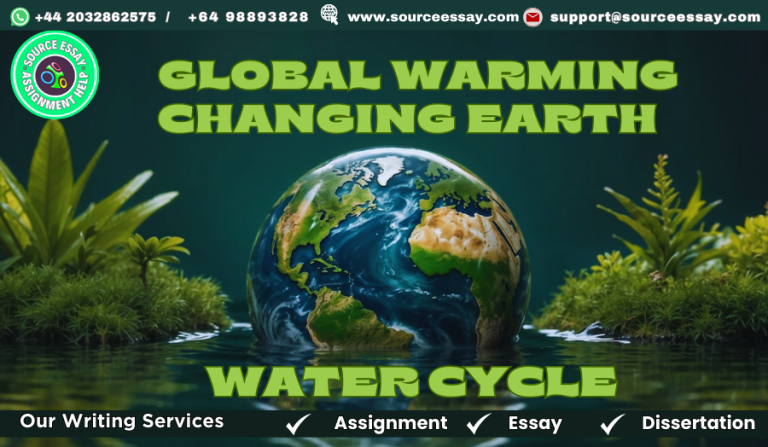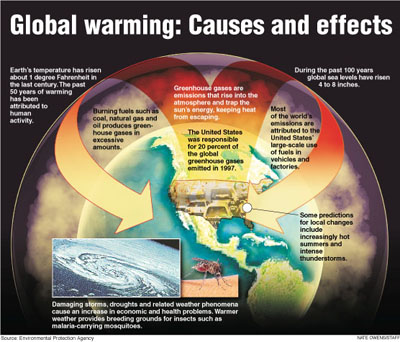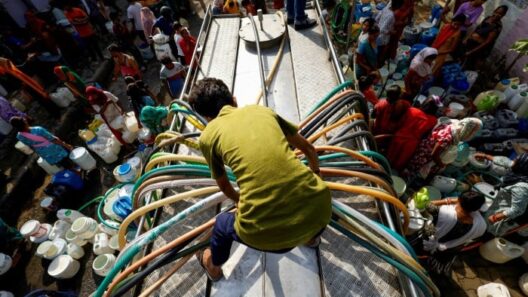Global warming is akin to a silent thief, stealthily undermining the intricate equilibrium of the Earth’s water cycle. This vital system, often compared to the planet’s circulatory system, is fundamental for sustaining life. The dynamics of this cycle are impacted by rising temperatures, resulting in disarray that threatens ecosystems, agricultural productivity, and human livelihoods alike. To fully grasp the impact of global warming on the water cycle, it is essential to comprehend the components of this cycle and the associated consequences of its disruption.
The water cycle comprises several critical processes: evaporation, condensation, precipitation, infiltration, and runoff. As the Earth’s temperature escalates due to greenhouse gas emissions, evaporation rates inevitably increase. This phenomenon is reminiscent of a pot of water on a stove; as the heat rises, the water turns into vapor, ascending into the atmosphere. However, when this heat is derived from anthropogenic sources, the implications extend far beyond a simple increase in humidity.
Enhanced evaporation leads to greater moisture accumulation in the atmosphere. The atmosphere acts like a sponge, soaking up more water than it can efficiently manage. This excess moisture can result in an amplification of extreme weather events. In the past decades, we have witnessed an alarming increase in the frequency and intensity of severe storms, hurricanes, and heavy precipitation. Such occurrences are not random anomalies but rather the chaotic manifestation of a disrupted water cycle.
As the atmosphere continues to swell with moisture, the process of condensation also becomes altered. Warm air, laden with water vapor, rises to cooler altitudes, where condensation occurs, generating clouds. However, the dynamic equilibrium of this process is susceptible to fluctuations in temperature. Warmer air holds more moisture, which can lead to a delay in precipitation. Instead of consistent rain, certain regions may experience protracted dry spells followed by deluges, wreaking havoc on agricultural systems. Crops, essential for global food security, may falter under the erratic patterns of rainfall.
The repercussions of uneven precipitation are profound. While some areas may suffer from excessive rain leading to flooding, others may slip into prolonged droughts, showcasing the duality of global warming’s impact. Drought conditions exacerbate water scarcity, leading to depletion of freshwater resources. Groundwater levels drop, rivers recede, and once-lush landscapes transform into arid deserts, underscoring a stark transformation driven by changing climate patterns.
Among the environmental consequences of this disruption is the gradual loss of biodiversity. Aquatic ecosystems, which thrive on stable water temperatures and flows, suffer as alterations in the water cycle take hold. Species that rely on particular conditions for survival are placed in jeopardy. For example, fish populations can decline due to temperature fluctuations and changes in water chemistry, disrupting the entire food web. The water cycle, once a picture of vibrant interdependency, now threatens the unforeseen domino effect of extinction and habitat loss.
In addition to ecological ramifications, the socio-economic repercussions of this altered water cycle are stark. Communities that once depended on predictable seasonal rains find themselves grappling with uncertainty. Farmers face the daunting task of adapting to shifting climatic patterns, often investing in irrigation systems or drought-resistant crops—measures that may not adequately mitigate the impacts. Food prices surge in response to decreased agricultural productivity, placing increased pressure on already vulnerable populations.
Moreover, the relationship between global warming and the water cycle extends to the melting of polar ice caps and glaciers. As temperatures rise, the Arctic and Antarctic regions experience accelerated ice melt, contributing to rising sea levels. The melting ice not only serves as an indicator of climate change but further complicates the water cycle. Freshwater from the ice caps enters the oceans, altering salinity levels and potentially disrupting ocean currents. These currents play a crucial role in regulating climate patterns globally, highlighting the intricate interdependence of the Earth’s systems.
To address this multifaceted crisis, it is imperative to recognize the significant role of conservation and sustainable practices in mitigating the effects of global warming on the water cycle. Initiatives that promote water conservation, reforesting efforts, and the restoration of wetlands can enhance the resilience of ecosystems. Implementing sustainable agricultural practices, such as crop rotation and organic farming, not only fosters healthier soil but also contributes to a more stable water cycle.
Community engagement and education play pivotal roles in fostering awareness around the impacts of climate change and water management. Grassroots movements and global coalitions can amplify collective action, driving policy changes that prioritize environmental sustainability. As stewards of the Earth, collective consciousness and proactive measures can pave the way for a reimagined future where harmony between humanity and nature is restored.
The water cycle is undeniably one of the planet’s most vital processes, akin to the beating heart of a living organism. As global warming continues its insidious march, the delicate balance of this cycle teeters on the brink of catastrophic upheaval. Addressing the consequences of climate change on this system requires urgency and dedication. By understanding the profound interconnectedness of Earth’s processes, we can begin to navigate the challenges posed by a shifting climate and strive toward a sustainable future.








